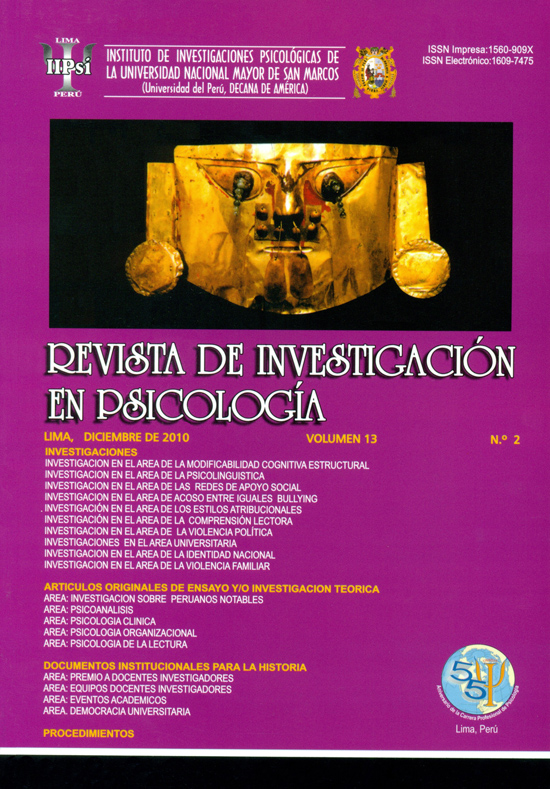Peru: Map of family violence, at departamental level according to ENDES 2007-2008: features and implications
DOI:
https://doi.org/10.15381/rinvp.v13i2.3725Keywords:
domestic violence, national and district mapAbstract
The main objective of this study was to develop a map of Domestic Violence in Peru at the national and departmental level, based on the results of the Population and Family Health ENDES 2007-2008. Developed a Global Index Family Violence (IGVF) that summarizes the indicators of physical violence, psychological and sexual violence. The construction of such an index was performed by multivariate PRINCALS method, also called categorical principal component analysis or nonlinear. Since the variables are measured in nominal or ordinal scales are not related in a linear fashion and, therefore, is required to use the optimal scaling procedure is usually called, using the above method. This index allowed the mapping in question, whose main advantage is to overcome the fragmentary information on physical, psychological, sexual and associated variables such as age, marital status, educational level and socioeconomic status. The estimate of the Global Family Violence (IGVF), nationally, is equal to 12,58 and the rate of psychological violence (IVP), is equal to 23,40, both with low coefficient of variation (0,014). The departments of Loreto, Apurimac, Pasco, Mother of God and Arequipa, up 20% more IGVF, it fluctuates between 14,28 and 16,13. 20% of departments IGVF lower, with values ranging between 10,43 and 13,38, consists of Ica, Lima, Cajamarca and Lambayeque. The most important conclusion is that in Peru today, domestic violence in its different forms, physical violence, psychological violence and sexual violence is widespread and entrenched throughout and distributed with some differences at the departmental level.Downloads
Published
Issue
Section
License
Copyright (c) 2010 Manuel Miljánovich Castilla, Violeta Nolberto S., Martha Martina Ch., Rosa Elena Huerta R., Fernando Camones G.

This work is licensed under a Creative Commons Attribution-NonCommercial-ShareAlike 4.0 International License.
THE AUTHORS RETAIN THEIR RIGHTS:
a. The authors retain their trademark and patent rights, and also on any process or procedure described in the article.
b. The authors retain the right to share, copy, distribute, execute and publicly communicate the article published in the Journal of Research in Psychology (for example, place it in an institutional repository or publish it in a book), with acknowledgment of its initial publication in the Journal of Research in Psychology.
c. Authors retain the right to make a subsequent publication of their work, to use the article or any part of it (for example: a compilation of their work, lecture notes, thesis, or for a book), provided that they indicate the source. of publication (authors of the work, magazine, volume, number and date).






